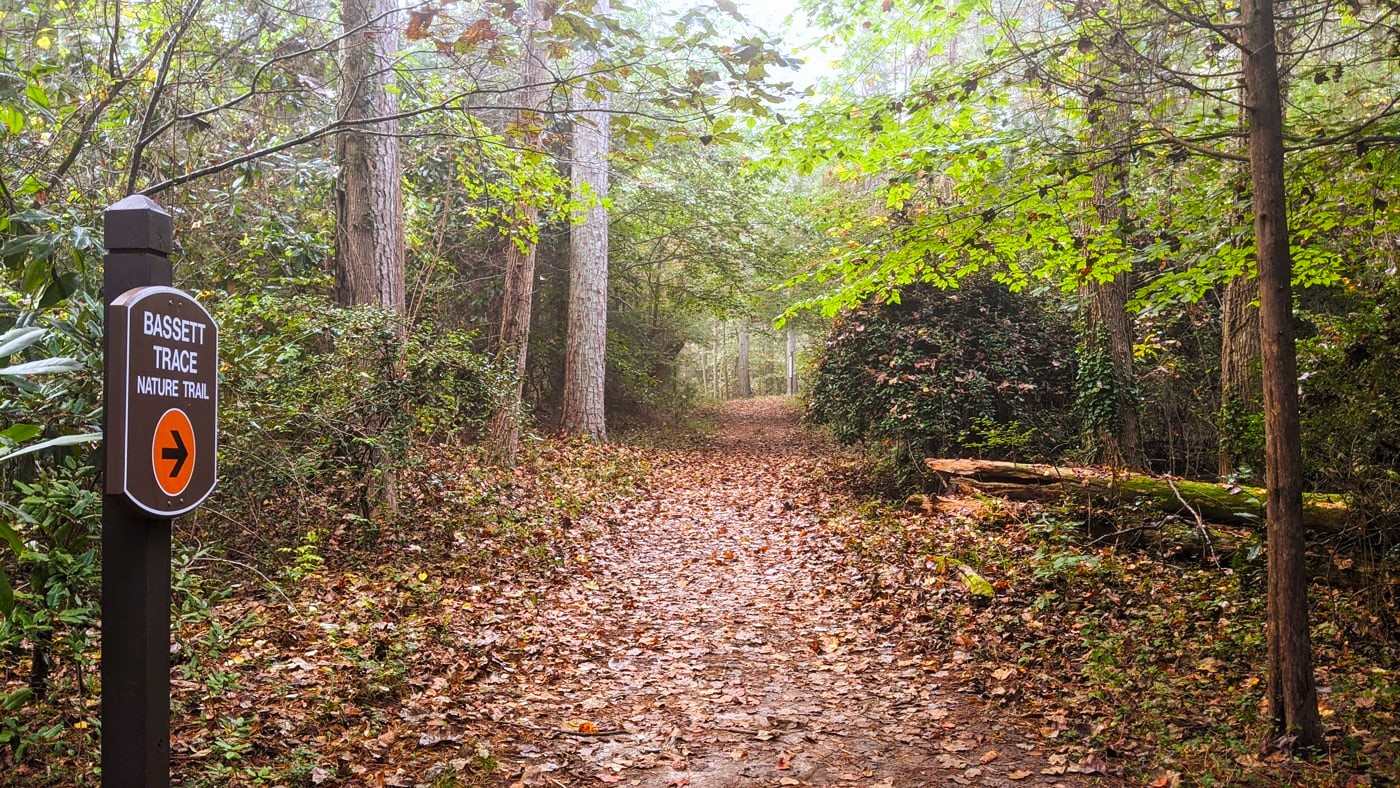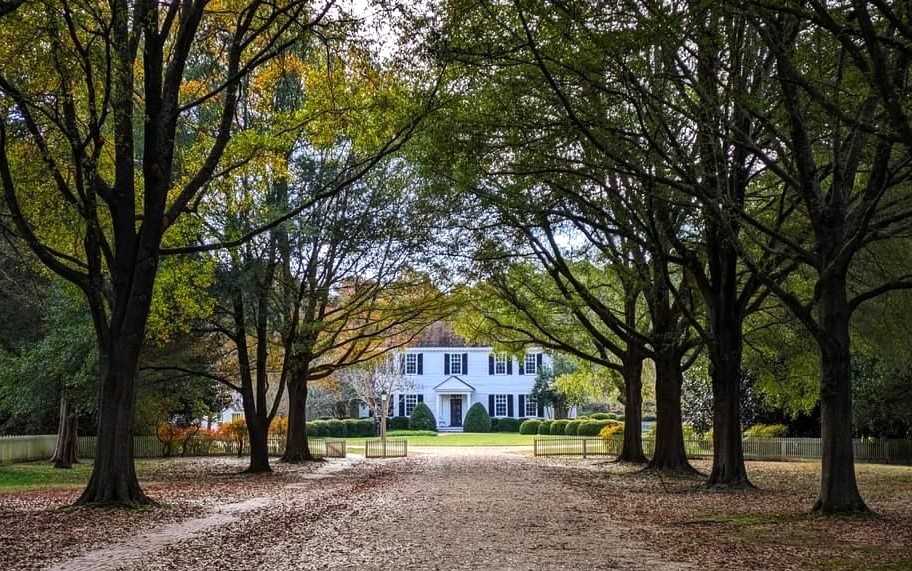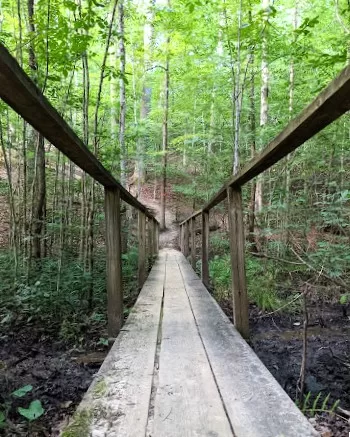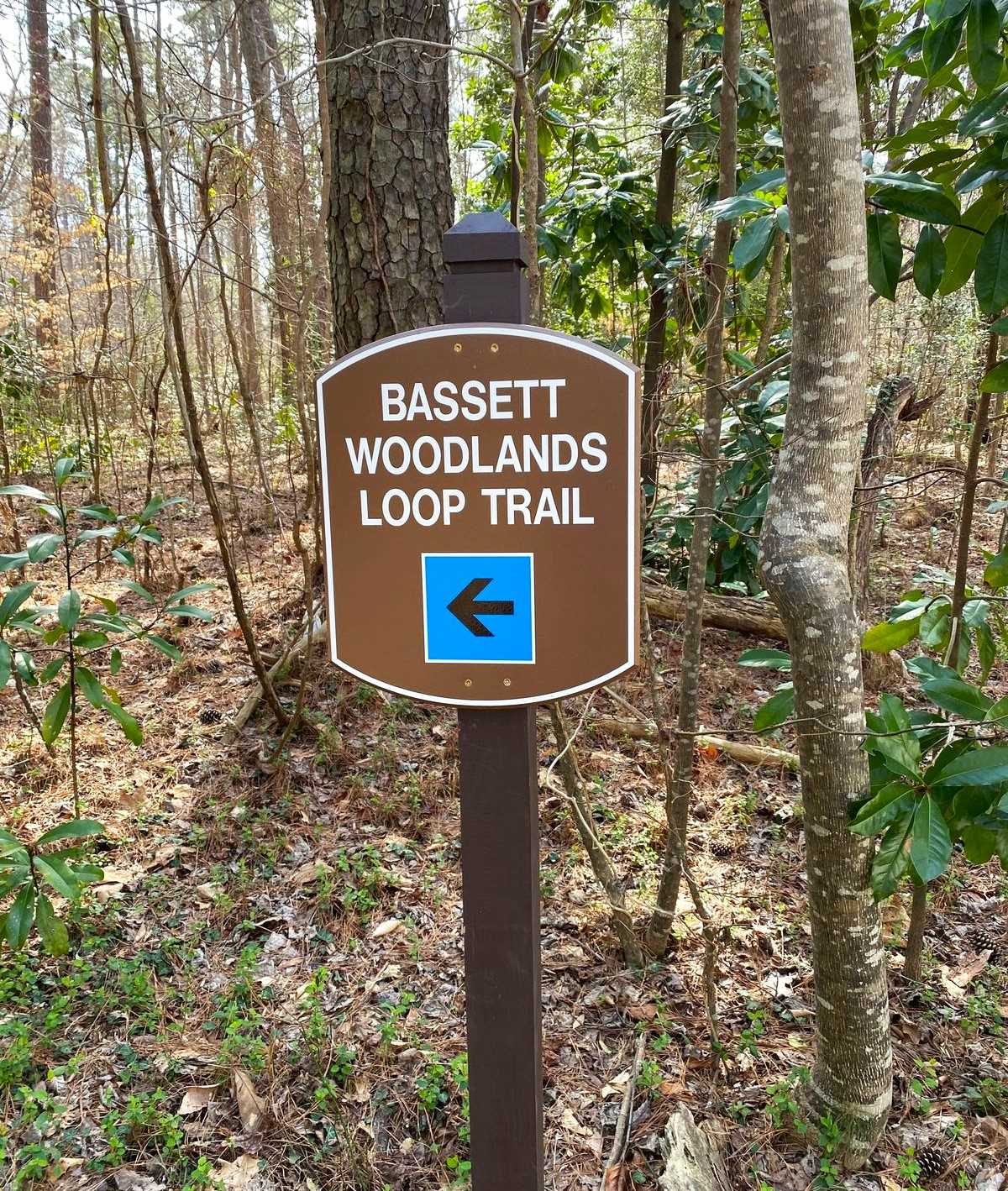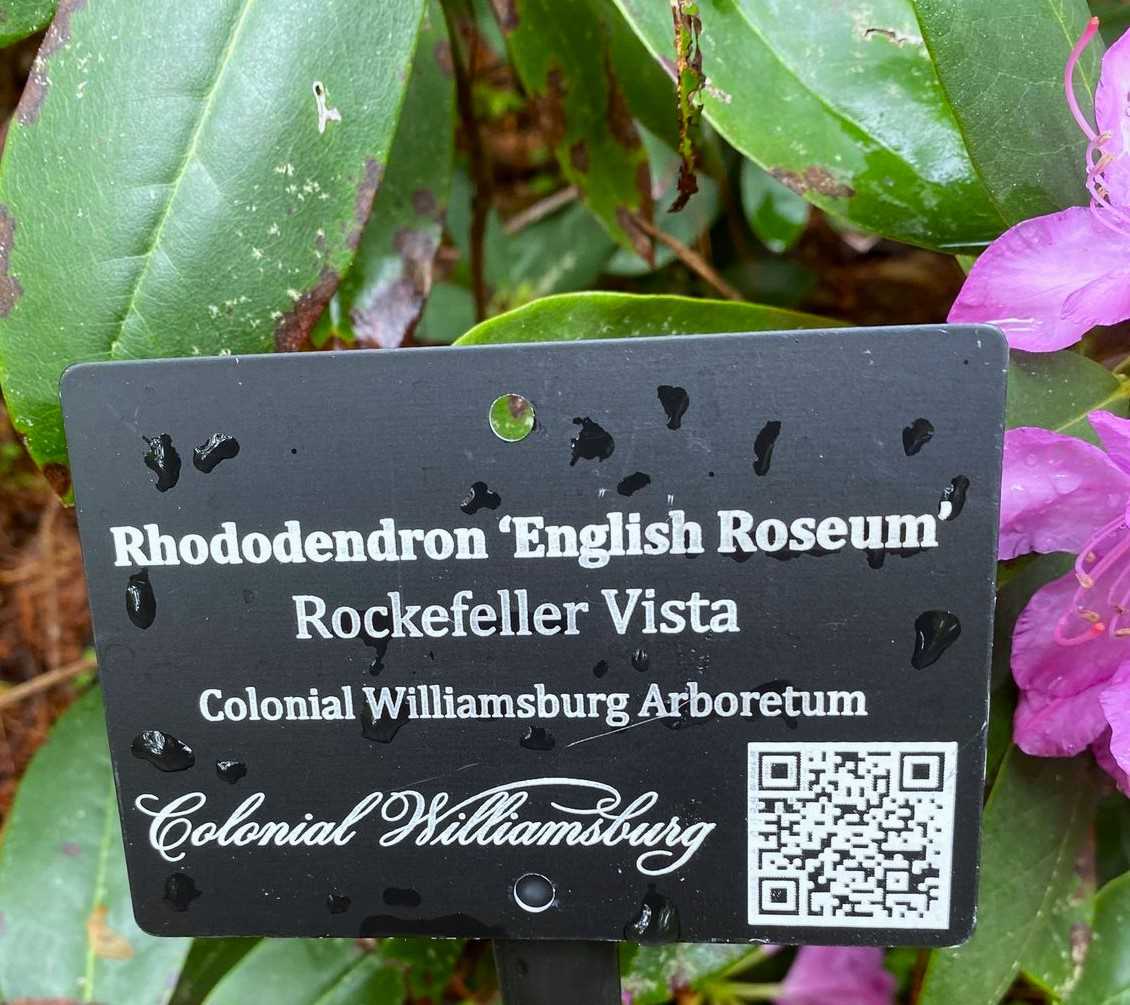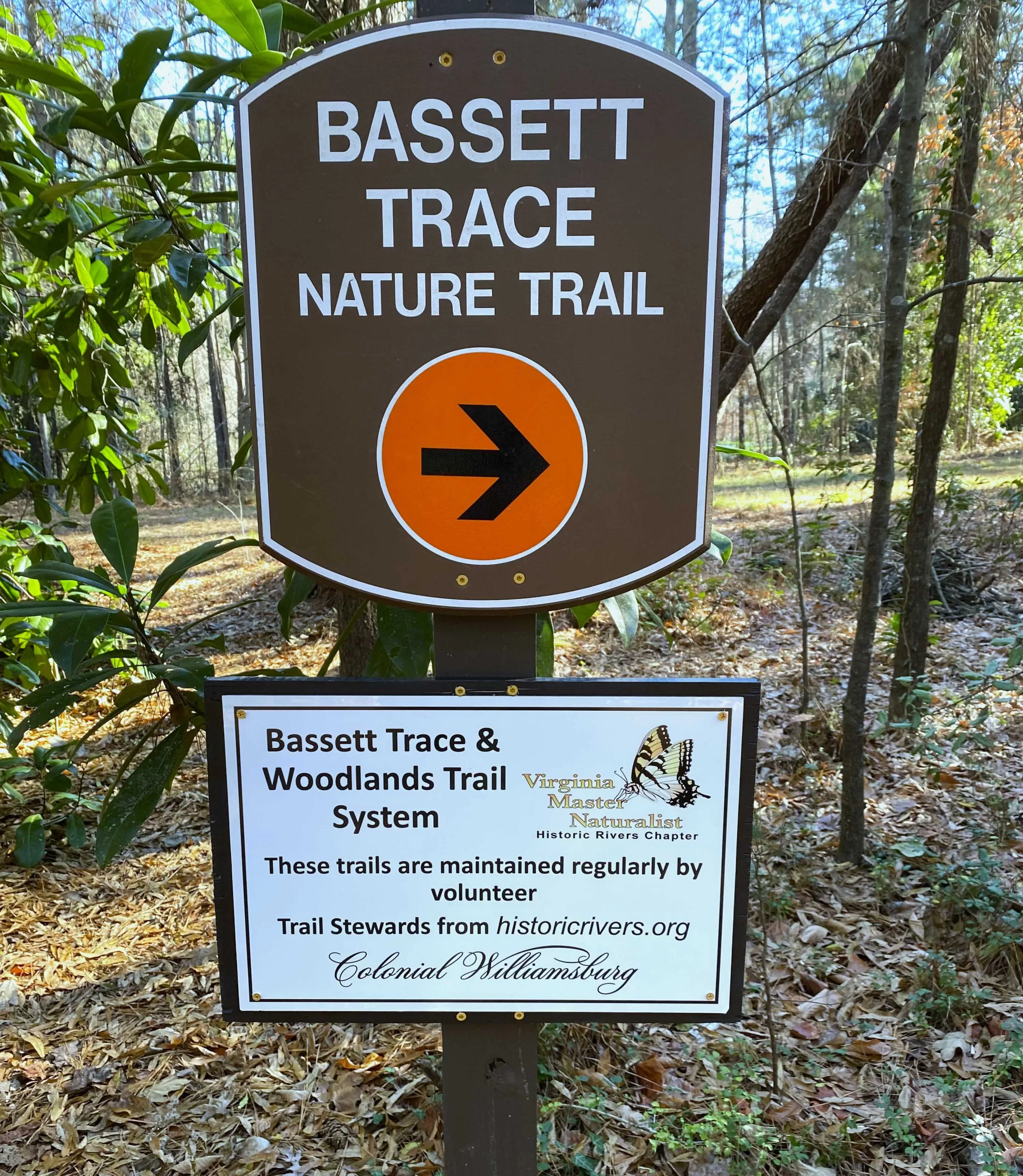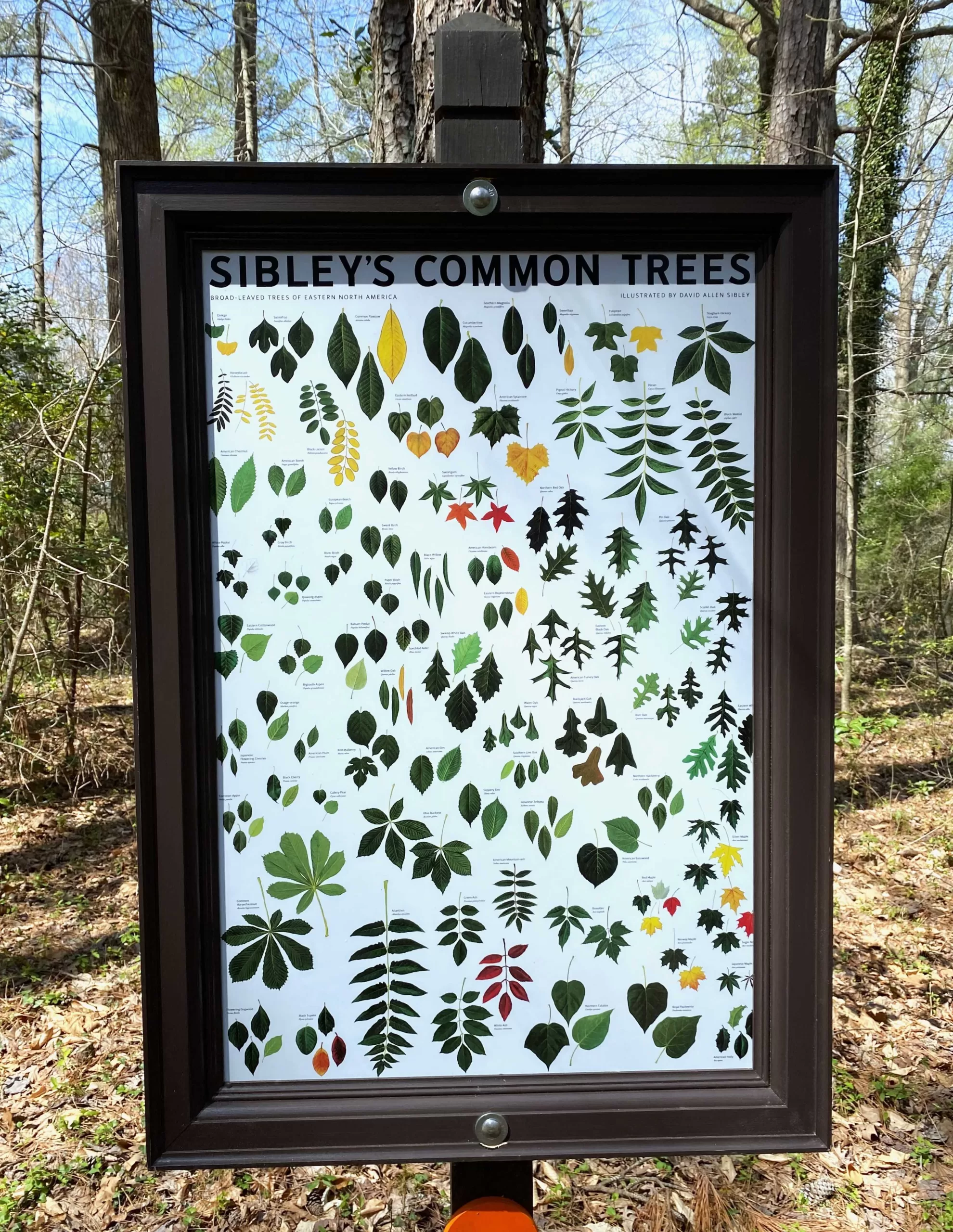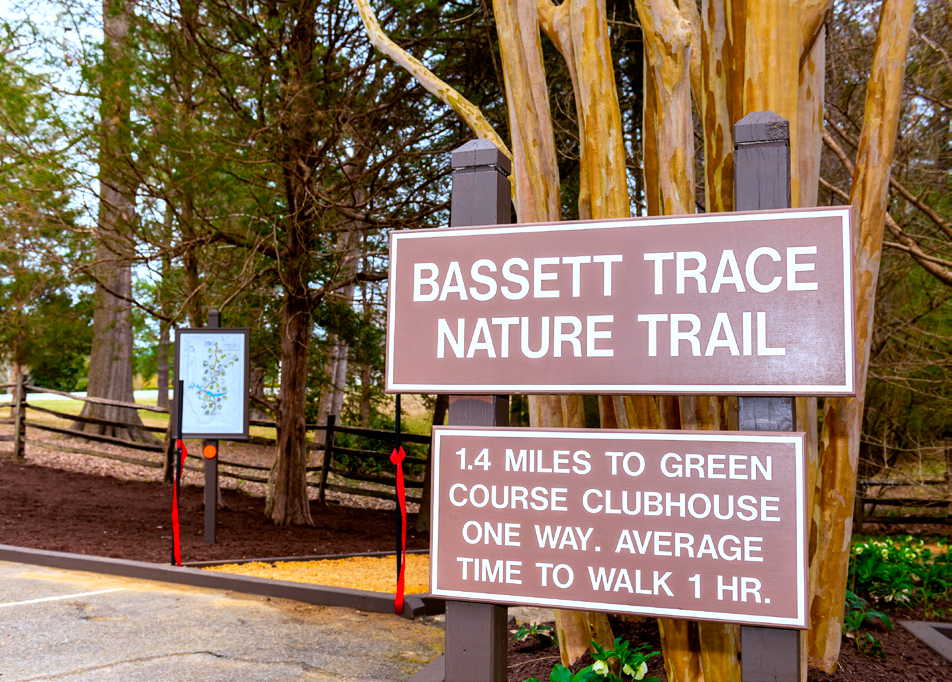The Bassett Trace Nature Trail
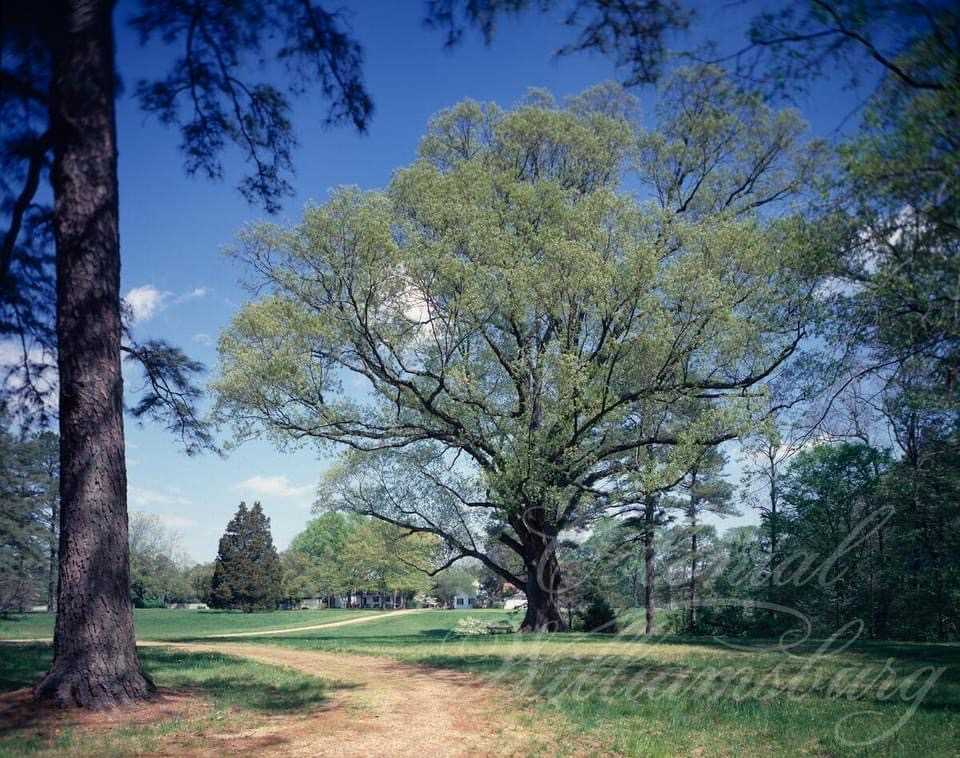
The “Great Oak” behind Bassett Hall. Photo courtesy of the Colonial Williamsburg Foundation Archives
Colonial Williamsburg welcomes visitors to the natural beauty of one of the wilder, quieter portions of the historic area.
The Bassett Trace is named after Burwell Bassett, Martha Washington’s nephew and a Virginia legislator and congressman. In 1800, he purchased a white farmhouse near the trailhead. In 1936, that farmhouse, now known as Bassett Hall, became the favorite home of John D. Rockefeller, Jr. and his wife Abby Aldrich Rockefeller. During the restoration of Colonial Williamsburg, an undertaking largely funded through Mr. Rockefeller’s largess, Mr. and Mrs. Rockefeller enjoyed living in the restored farmhouse.
When Abby Rockefeller passed away in 1948, her husband deeded the property, including the acres where the Bassett Trace is located, to their eldest son, John D. Rockefeller III, retaining a life estate for himself. John D. Rockefeller, Jr. continued his annual visits until his death in 1960. In June 1960, 3,000 citizens gathered under the Great Oak for a memorial service marking the death of Mr. Rockefeller.

Great Oak – Memorial service for John D. Rockefeller, Jr. at the foot of the Great Oak at Bassett Hall, June 9, 1960.
Photo courtesy of the Colonial Williamsburg Foundation’s Visual Resources 1960-JC-440-3 Photographer: John Crane
In 1980 John D. Rockefeller, III, conveyed the property to the Colonial Williamsburg Foundation. Bassett Hall was opened to the public in 1980. It was closed for restoration in 2000 and reopened at the end of 2002. The grounds and woodlands have been open to the public ever since. The house was open for tours until the spring of 2020 when it closed during the pandemic. Plans for its reopening are ongoing.
The original 585-acre woodland area behind the residence played an important part in the history of Colonial Williamsburg. The “Great Oak” that was located at the southeast edge of the forest behind Bassett Hall was a historic landmark during the reconstruction of Colonial Williamsburg. On November 27, 1926, John D. Rockefeller, Jr. and Dr. W.A.R. Goodwin sat beneath this gigantic oak to discuss the possibility of restoring Williamsburg to its colonial appearance.
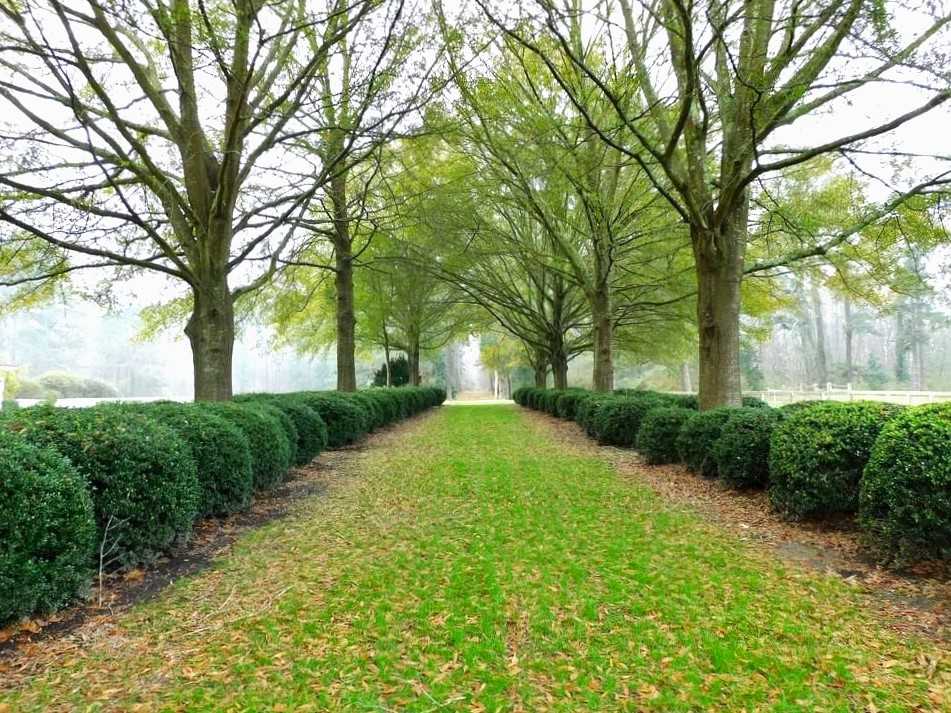
View of the Rockefeller Vista from the teahouse, with the Shurcliff Cedar barely visible on the right side of the path just past the boxwoods.
Mr. Rockefeller admired the tree and the last of the fall foliage. Dr. Goodwin recalled him saying, “If I come back someday, can we bring our lunch down and eat it under the tree?” This conversation marked the beginning of the historic effort to construct the world’s largest American living history museum.
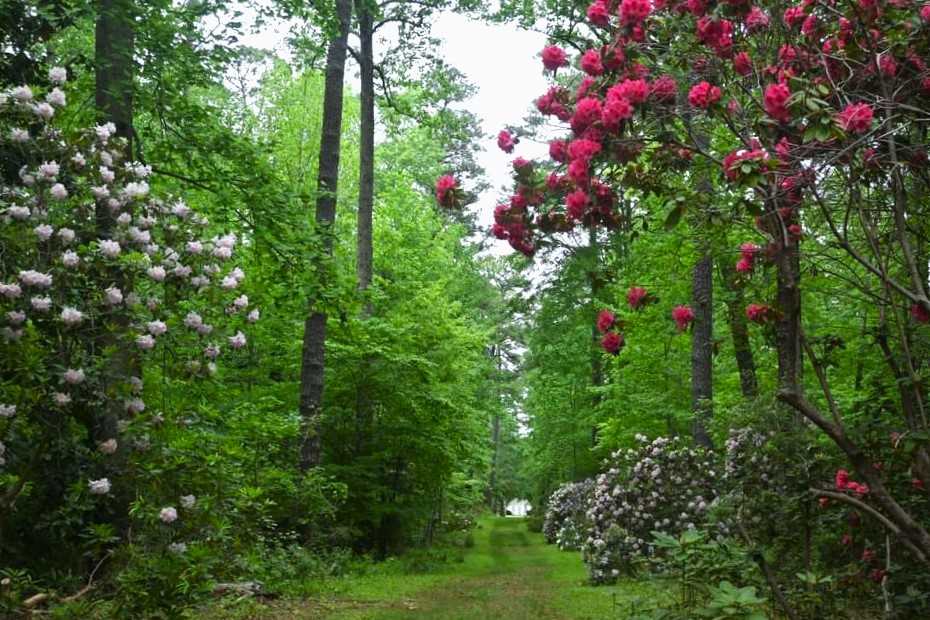
Rhododendrons in bloom on the Rockefeller Vista, looking towards the Bassett Hall teahouse at the northern terminus.
When Mr. and Mrs. Rockefeller visited Williamsburg during the reconstruction, they took particular delight in the natural beauty of the woodlands of the Bassett Hall property. Arthur A. Shurcliff, the first landscape architect associated with the reconstruction of Colonial Williamsburg, assisted the Rockefellers in developing the grounds during the 1930s. Mr. Rockefeller commissioned Mr. Shurcliff to cut a vista on a southern axis from the tea house or “orangery” to a half-mile distance into the woods.
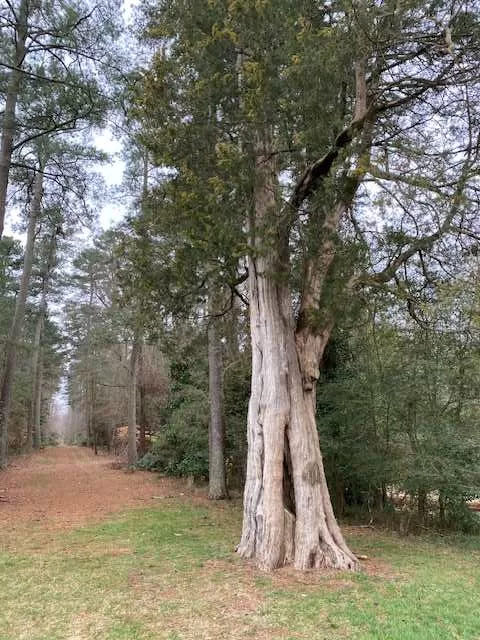
‘Shurcliff’s Cedar‘ as it appears summer 2023.
The problem was that a number of existing trees blocked the view from the house. These trees needed to be removed. There was one tree, however, that Shurcliff considered to be worth preserving. So, on January 3, 1933, Mr. Shurcliff wrote to the Williamsburg Holding Company requesting authorization to move that particular tree:
“This [big cedar] tree could not be cut like the few other trees that stood in the way, because it is too large and attractive. I told you the cost of moving this tree would be $75.00. The tree will be moved on this basis and will be in its new position within the time before the 25th.”

Cedar being prepared for move. Crew has dug around the roots and enclosed them for the move. Photo Courtesy of the Colonial Williamsburg Foundation.
Work began in earnest to hand dig around the roots of this large eastern red cedar in preparation for its transplanting to the new location. By January 27, 1933, when back filling was complete, the tree was in place at its present location at the northern terminus of the Rockefeller Vista. That tree, the “Shurcliff Cedar” is believed to be the oldest living tree in Colonial Williamsburg and is estimated to be 260 years old, older even than our nation.
The Rockefellers enjoyed and preserved the beauty of the native flora and fauna of the Bassett Hall property. The paths created by the Rockefellers for fire lanes and cart paths wind through the woods for hiking trails used by visitors.
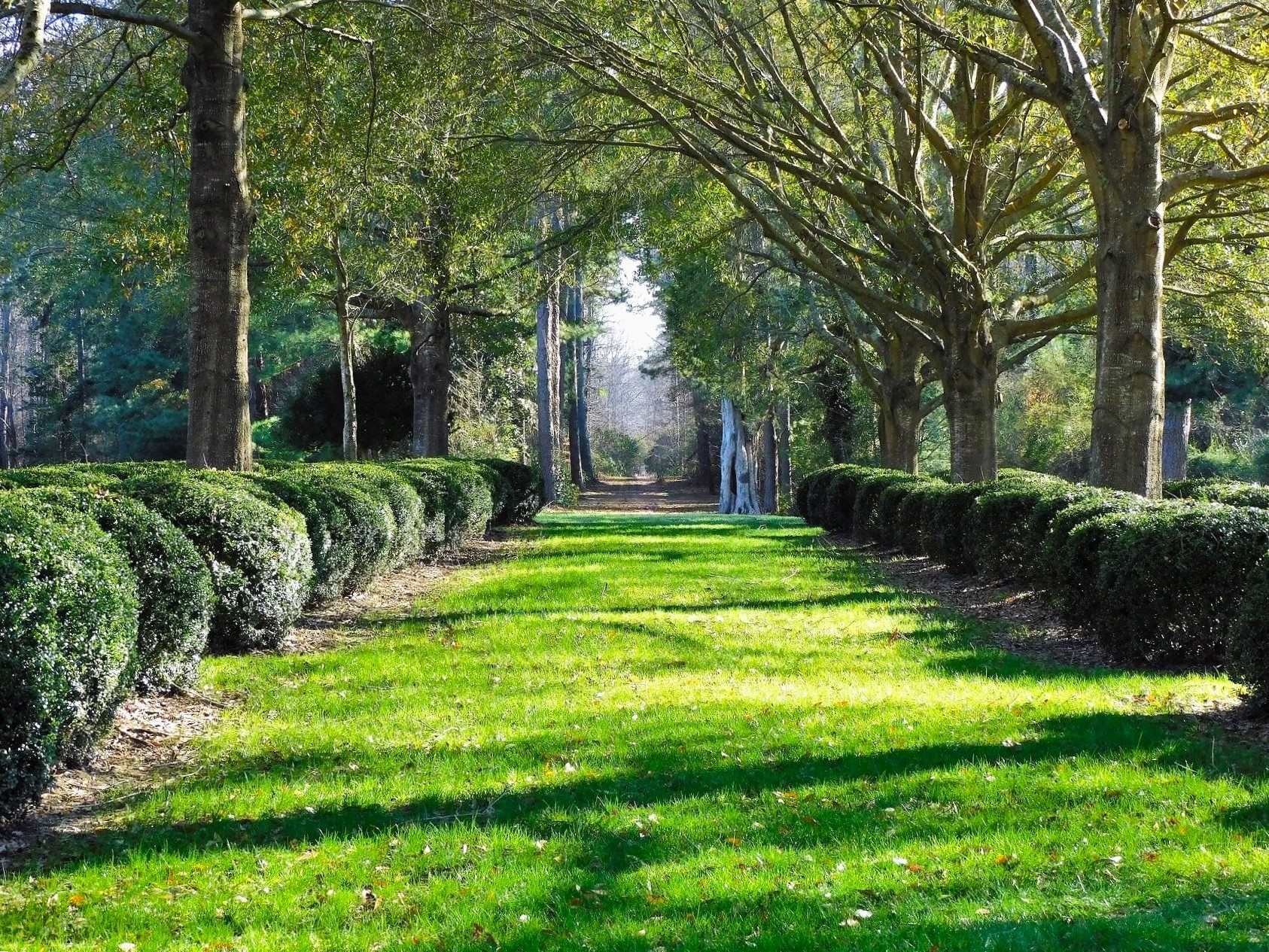
The Rockefeller Vista, looking into the woodlands, from Bassett Hall. The Shurcliff Cedar is on the right at the edge of the woodlands, just past the boxwoods. Its trunk is a lighter shade of grey.
“Yesterday afternoon we had such a lovely walk, going along one of the new paths which Papa has laid out and it makes a very pleasant diversion for us. We now have three or four different paths from which we may choose our afternoon walk.”
Abby Aldrich Rockefeller to her son Winthrop, written from Bassett Hall, April 10, 1945.
One of these paths, the Bassett Trace Nature Trail, has been cleared, redeveloped, and is now accessible to the public and visitors to Colonial Williamsburg. The trail is 2.5 miles in length, round trip, and begins at the parking lot for the Griffin Hotel’s Gold Wing off of Bucktrout Lane, and terminates at the Clubhouse for the Golden Horseshoe’s Green Course.
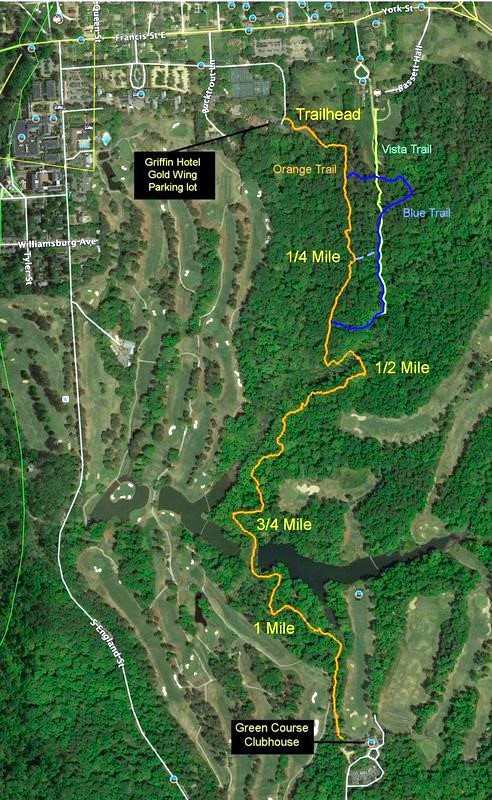
Aerial photo and map of the Bassett Trace and woodlands. The map is by Seig Kopinitz, Master Naturalist.
The trail gradually descends from the high ground that parallels the Rockefellers’ vista, beginning at the trailhead, and winds through the woods where the forest cover changes from soft pines to hardwood trees such as sycamores, tuliptrees, beeches, oaks, hornbeams, hickories, walnuts, locusts, and deciduous umbrella magnolias. The trail has two small footbridges that cross small spring-fed streams that flow through the ravines.
The slopes in this area are laden with ferns, mayapples, jacks-in-the pulpit, and a variety of seasonal native wildflowers. The trail also crosses a dam that was built to create a lake. The pilings from the Rockefeller’s boathouse still remain and are visible from the dam. The links of the two golf courses of the Golden Horseshoe course can be observed on both sides of the trail at this point.
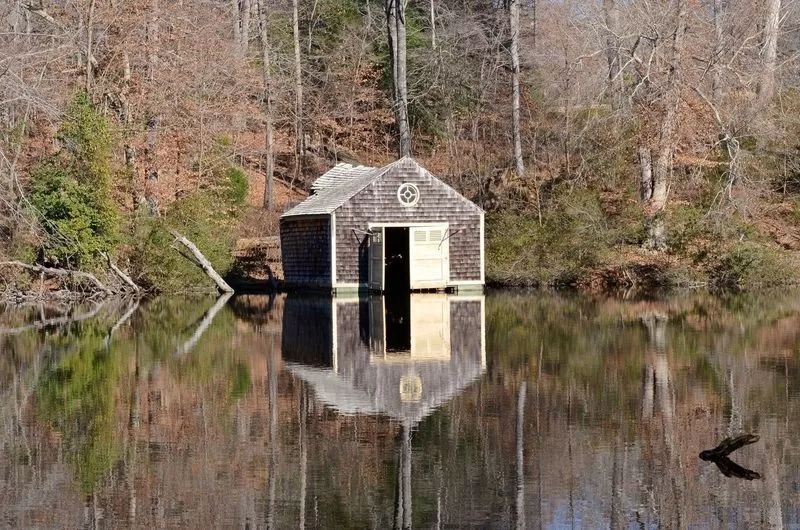
The Old Rockefeller boathouse, located on the pond, which is now gone. Photo courtesy of the Colonial Williamsburg Foundation Archives
Many birds inhabit the woodlands. Cardinals, mockingbirds, blue jays, wrens, chickadees, warblers, titmice and sparrow species abound. Ospreys, ducks, herons, and geese may be observed in the low swampy area that borders the golf course. Hawks, vultures and an occasional bald eagle fly overhead. This area is designated as a “Birding Hotspot” on the Cornell eBird app, with 159 species of birds identified on an annual basis.
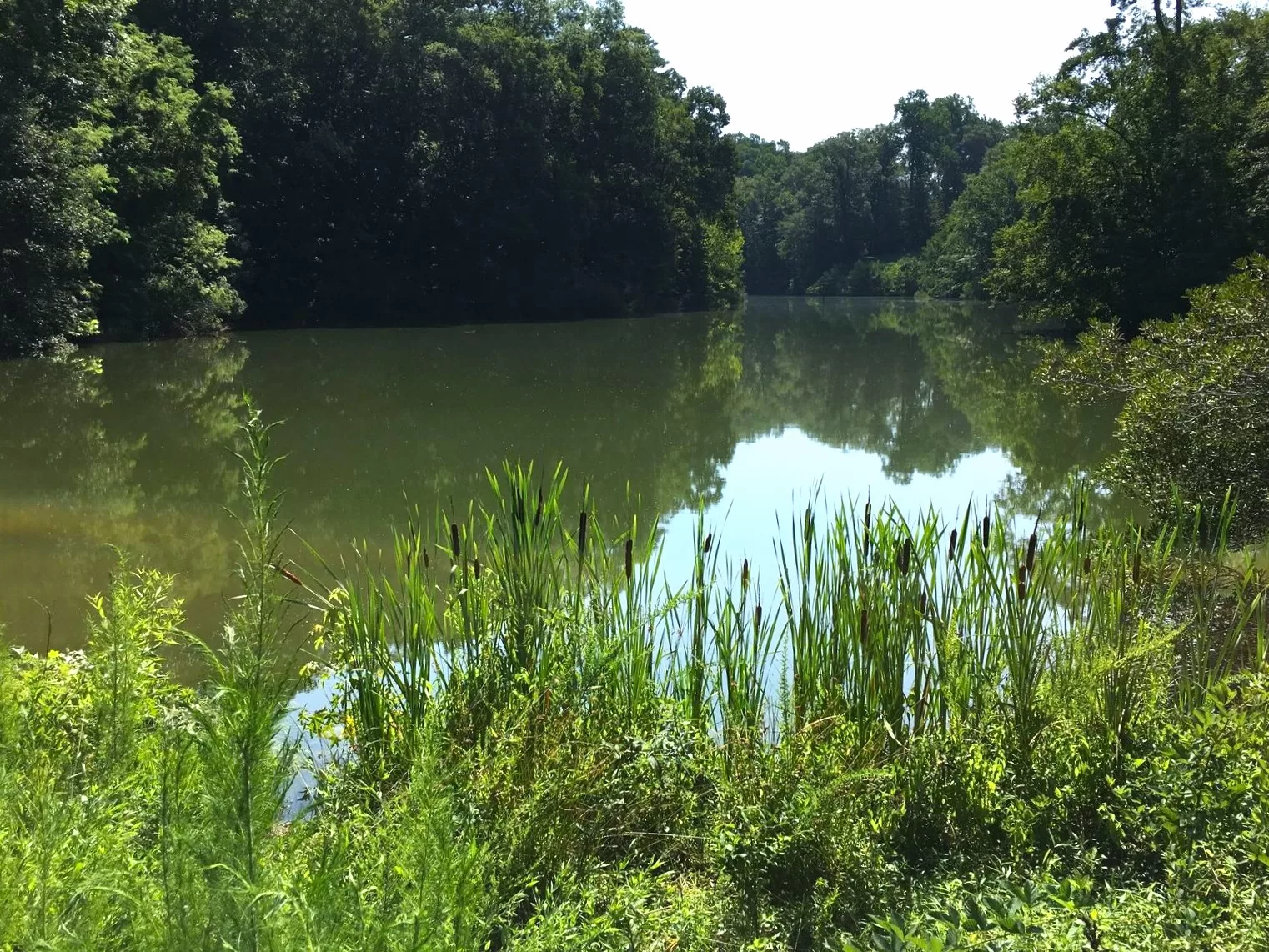
The pond on Bassett Trace, location of the former boathouse, is now a rich habitat for wildlife and a ‘Birding Hotspot.’
Charles Gardner, Colonial Williamsburg’s arborist, is currently working to create an evergreen loop as a feature along the Basset Trace Nature Trail. When completed, this walking trail will feature evergreens from around the globe and native understory and shade plants.
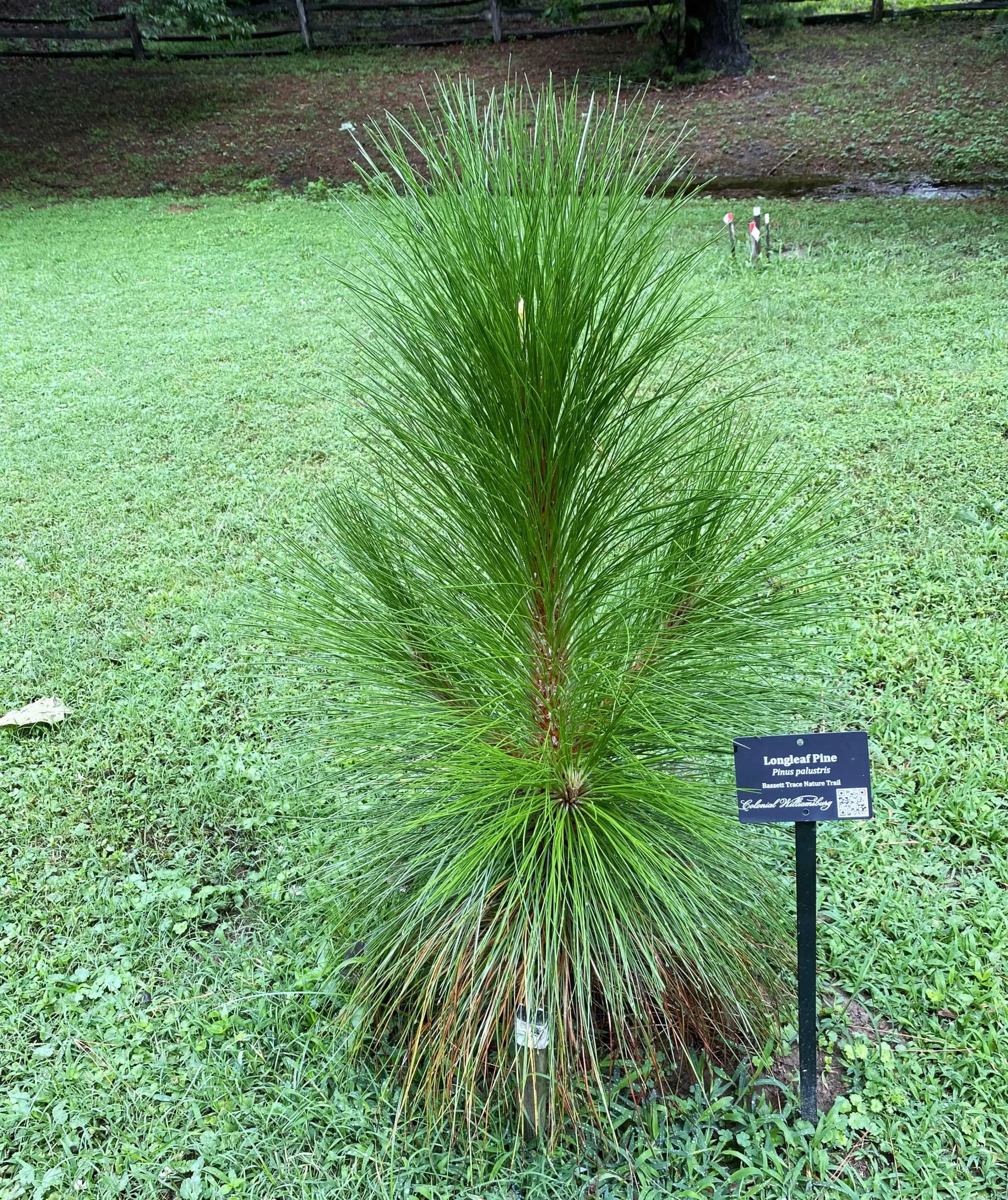
Native longleaf pine, Pinus palustris at the trailhead. This tree may one day reach 120′ tall and 40′ wide. It is an important species for wildlife, and has been important economically for its wood, pine straw and for making tar.
This area will focus on teaching students, and other visitors about evergreens and native shade plant habitats. Last year, Gardner began planting exotic evergreens among the area’s native pines. This year, he will add a walking path and additional evergreens. Colonial Williamsburg plans to begin offering ‘teaching walks’ through the area next year.
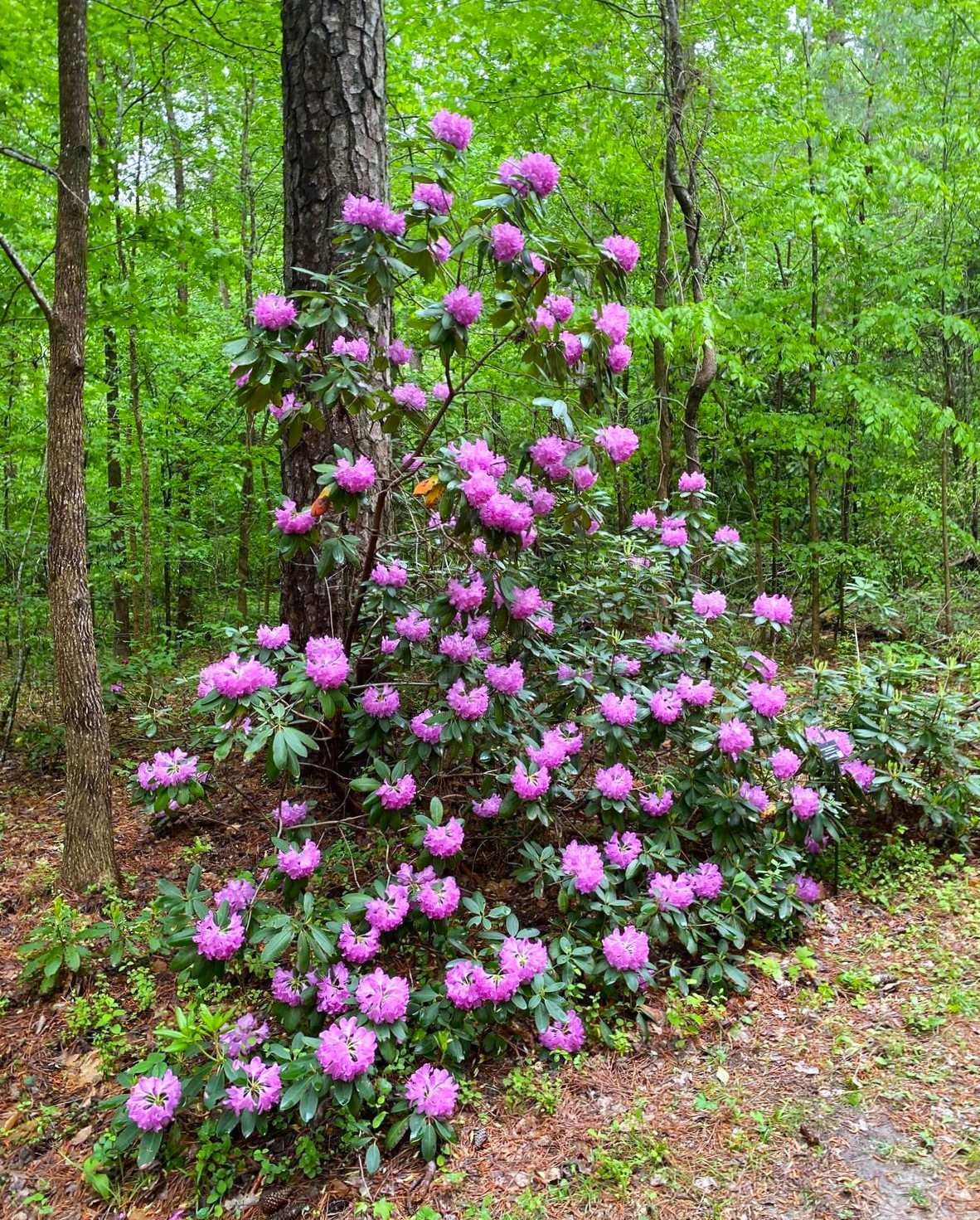
Rhododendron ‘English Roseum’ blooms in the shade during late April and early May on the Rockefeller Vista, but remains evergreen through the winter.
Those who visit the Bassett Trace Trail regularly know it is constantly changing with the seasons. Winter is interesting because the understory is largely barren, disclosing secrets not seen during the greener months. Christmas ferns, Polystichum acrostichoides, although visible year-round, become prominent when their foliage contrasts with the brown, leafy carpet of the forest floor.
Partridgeberry, Michella repens, another evergreen perennial, shows its bright red berries during winter months. The native American holly, Ilex opaca, with its own red berries, is the thicker hiding place for small birds that do not migrate.
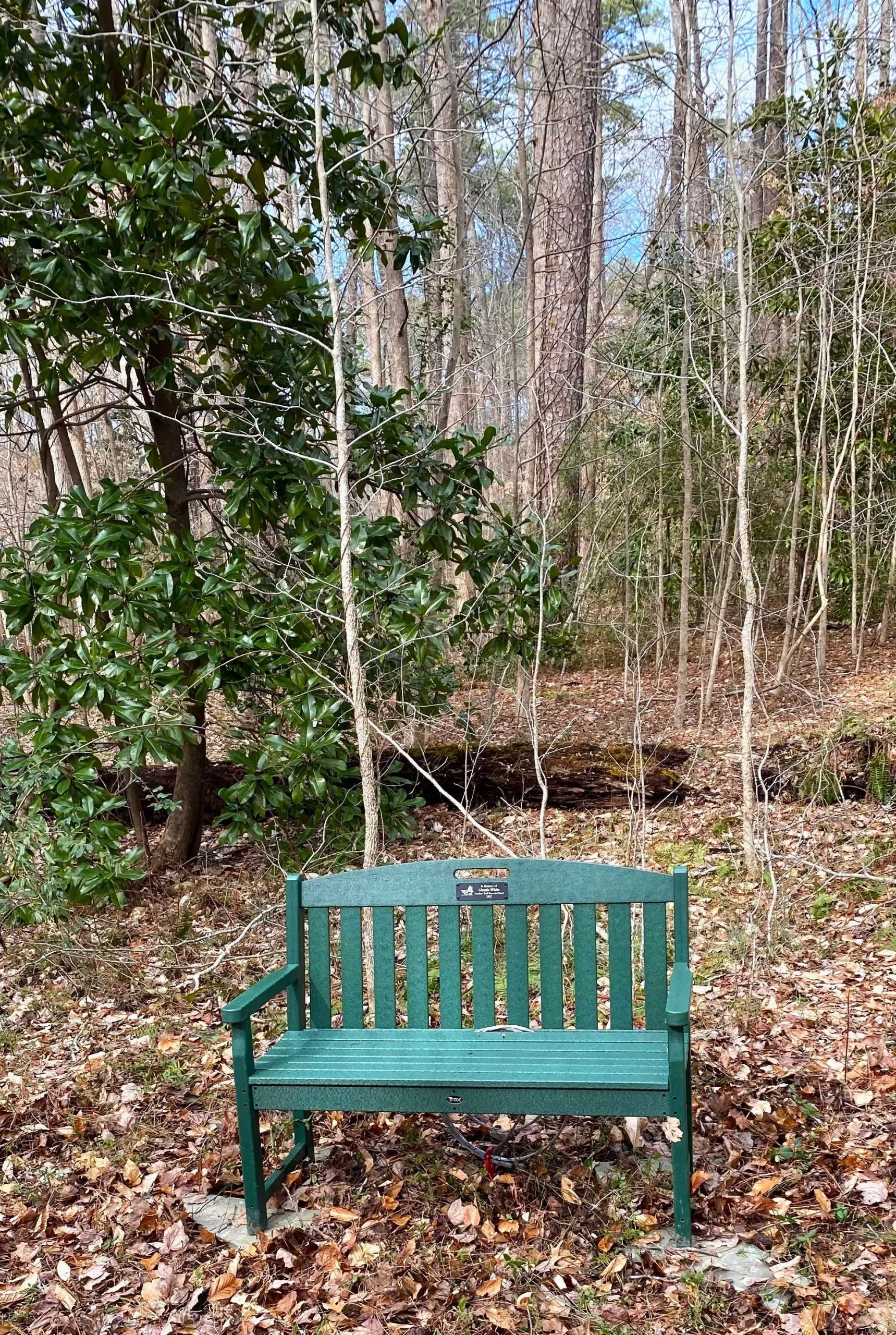
There are many spots along the trail to rest and admire the beauty of the landscape. Evergreen native Christmas ferns grow behind this bench, and a Southern Magnolia shades it. Southern Magnolia is native to the Southeastern US, but didn’t grow north of the North Carolina border during the colonial period.
Looking off into the woods from the trail, a hiker will see numerous mid-story Southern magnolias, Magnolia grandiflora, which have naturalized in this area over the past 50 years as our climate warms. Along the Rockefeller Vista, the Rhodendrons planted in 1980, under the loblolly pines, are another evergreen tree that help form an evergreen corridor from Bassett Hall at the north end down for a quarter mile into the deeper woods, south of the house.

Rhododendron ‘Catawbiense Album’ on the Rockefeller Vista
Trail directions are marked with orange and blue blazes painted on trees throughout the trail. A mounted placard map is provided at the trailhead for visitors to familiarize themselves with the trail’s features before embarking. There are numerous interactive plant tags provided for visitors to identify several species of trees, shrubs and plants that border the trail.
Visitors with smartphones can access additional plant and historic information by scanning the QR codes on each tag.
Benches and picnic tables are randomly provided for visitors to relax and contemplate the beauty of the area. For safety, visitors should remain on the marked trail and use the provided bridge crossings and handrails, watching carefully for exposed roots and the edges of steep ravines.
Volunteers from the Historic Rivers Chapter of the Virginia Master Naturalists maintain the trail and provide weekly guided nature walks for the public, and special tours for various groups, as scheduled.
Please help preserve this beautiful natural setting and keep it safe from fire and free of liter by not smoking on the trail, and by using the trash receptacles. Pets are welcome so long as they bring responsible owners who are willing to clean up after them. Visitors are requested not to pick blooms or disturb plants so that those who follow may also enjoy them.
Remember, take only pictures, leave only footprints as you enjoy these woods.
All text and photos, unless otherwise indicated, are courtesy of Rick Brown, Master Gardener Tree Steward, Master Naturalist,
and Colonial Williamsburg Volunteer.
For More Information:
Bassett Trace Nature Trail – Colonial Williamsburg website
Other links and comments on the nature trail:
The Rockefellers and Bassett Hall
Virginia Master Naturalists
Historic Rivers Chapter – Trail Stewards

